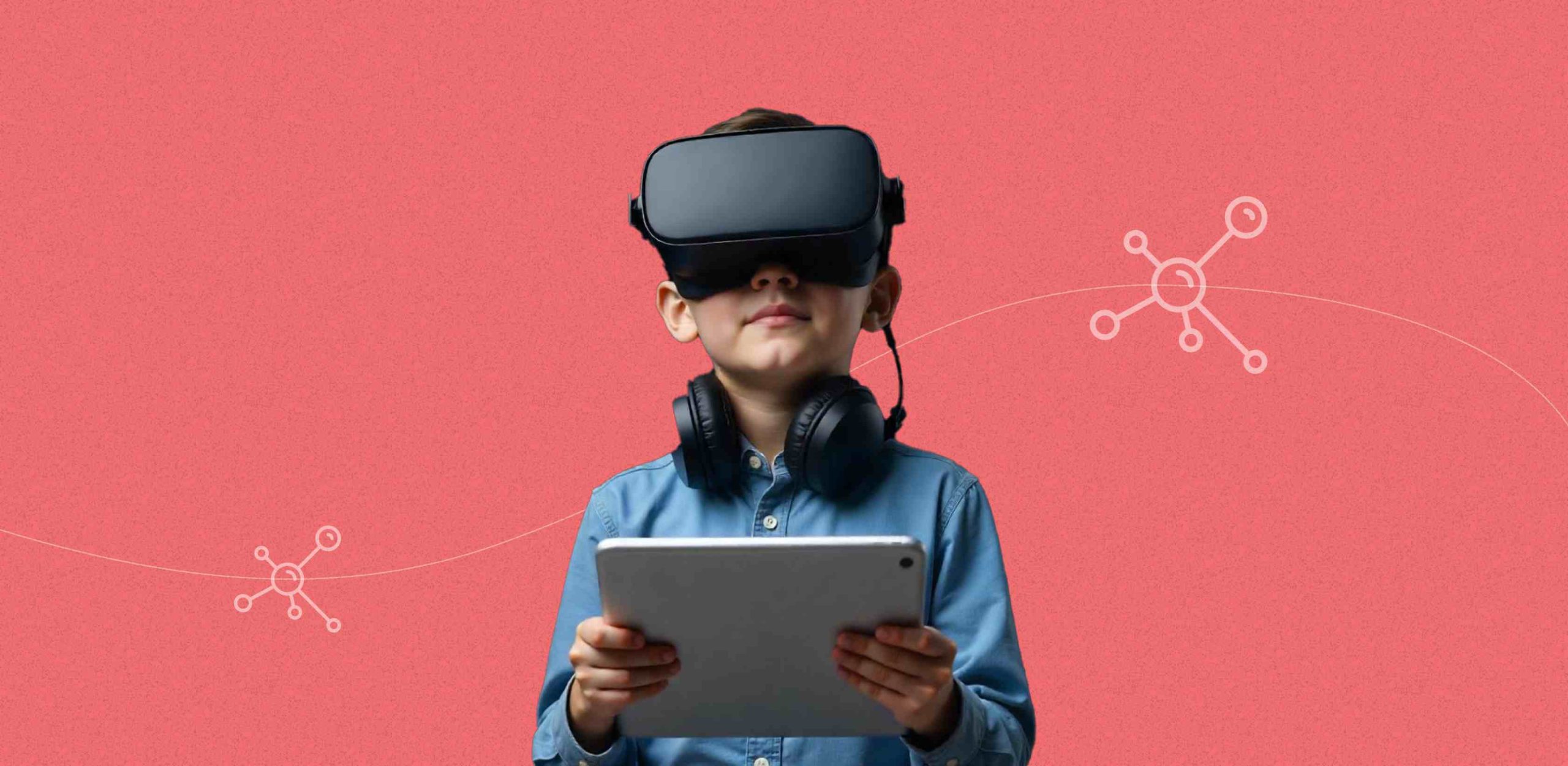Text and video chatting app development has become a critical area of focus in today’s fast-paced digital landscape. As the demand for real-time communication continues to grow, businesses and individuals alike are seeking advanced solutions that integrate both text and video functionalities seamlessly. The rise of these communication tools is driven by the need for efficient, instant connectivity across various platforms, whether for personal interactions, professional meetings, or customer support services.
With groundbreaking innovations in AI, WebRTC, and cross-platform development, the scope of text & video chatting app development is expanding rapidly. These advancements not only enhance user experience but also offer businesses the ability to create customized, secure, and high-performing communication solutions that cater to diverse needs. In this blog, we explore the latest trends and technologies shaping the future of text and video chat apps, providing insight into how these tools are revolutionizing modern communication.
The Evolution of Text and Video Chatting App Development
The journey of communication apps started with basic text messaging services, evolving into multimedia-rich applications that include video and voice chat. Early instant messaging platforms such as AOL Instant Messenger and MSN Messenger set the foundation for text communication, which was then followed by the addition of video capabilities with platforms like Skype.
Fast forward to today, and chat apps have become comprehensive tools for both personal and professional communication. The fusion of text, voice, and video has transformed these platforms into multi-functional communication hubs. Apps like WhatsApp, Telegram, Zoom, and Google Meet now provide a seamless integration of these features, demonstrating how far we’ve come from the days of simple text-based chat services. As developers continue to innovate, the boundaries of text & video chatting app development continue to expand.
AI Integration in Text and Video Chatting App Development
Artificial Intelligence (AI) has significantly impacted the way text and video chatting apps function. AI integration enhances user experiences, making communication faster, more intuitive, and efficient. One of the most prominent examples of AI in text & video chat app development is the introduction of smart replies. Powered by natural language processing (NLP), these features allow users to send quick, relevant responses without manually typing.
Moreover, AI-powered chatbots are revolutionizing customer service in both personal and enterprise chat applications. Whether it’s automating customer support or providing real-time solutions to common queries, AI-driven chatbots improve communication efficiency, reduce wait times, and enhance the overall user experience.
Voice and facial recognition, driven by AI, are also contributing to the enhanced security of video calls. This technology verifies user identities, adding an extra layer of protection. Additionally, AI-based noise cancellation algorithms ensure clear audio quality during video chats, significantly improving user satisfaction.
WebRTC for Text and Video Chatting App Development
WebRTC (Web Real-Time Communication) has become a cornerstone technology for WebRTC app development, particularly for video chat apps. This open-source project enables real-time communication between browsers and mobile applications via simple APIs. It supports audio, video, and data transmission, ensuring low-latency communication without the need for external plugins.
For businesses seeking to build scalable and high-performance video chat applications, WebRTC offers an efficient solution. The technology powers popular platforms like Google Meet, Facebook Messenger, and Discord. Since it’s free and continuously updated by an active community, WebRTC app development companies can deliver cost-effective and robust solutions for their clients.
One of the key benefits of WebRTC is its ability to enable peer-to-peer communication. This removes the need for servers to route data, reducing latency and improving the overall quality of video and voice calls. Whether you are looking to create a conferencing platform or a customer support tool, WebRTC app development is a crucial technology that helps create real-time communication applications that offer superior performance.
Cross-Platform Compatibility and Development
One of the biggest challenges in text & video chatting app development is ensuring cross-platform compatibility. Users expect seamless communication across different devices—whether they’re using a smartphone, tablet, or desktop. Cross-platform development ensures that applications function efficiently across various operating systems like iOS, Android, Windows, and macOS, providing users with a unified experience.
To achieve this, developers use frameworks like React Native and Flutter, which allow for creating apps that run smoothly on multiple platforms using a single codebase. These frameworks reduce the time and cost of development, enabling faster rollouts of updates and new features.
In today’s globalized world, businesses require apps that offer seamless interaction, regardless of the device or platform. Cross-platform development is a key innovation driving the evolution of text & video chat app development, ensuring users experience the same high-quality service, no matter what platform they’re using.
Security Innovations: End-to-End Encryption and Data Privacy
With the increasing reliance on communication apps, data privacy and security have become major concerns. End-to-end encryption (E2EE) has emerged as a key feature in modern chat apps, ensuring that only the intended recipients can access the content of messages and calls. WhatsApp and Signal are two prominent examples of apps that have integrated E2EE to protect user data.
In addition to encryption, chat apps now incorporate multi-factor authentication (MFA), session timeout features, and biometric logins to enhance security. These technologies prevent unauthorized access, ensuring that sensitive data remains secure.
As users continue to demand better security features, developers are focusing on implementing advanced data protection measures. Text & video chat app development companies must prioritize these features, ensuring compliance with privacy regulations such as GDPR and CCPA to provide users with secure communication channels.
Customization and Personalization Features
Personalization is one of the most significant trends driving innovation in text & video chatting app development. Users want apps that cater to their preferences, whether it’s custom chat themes, personalized avatars, or unique notification settings. Customization allows users to tailor their experience, making apps feel more interactive and engaging.
Developers are incorporating AI-driven personalization features that analyze user behavior to offer suggestions and customization options. For example, some apps now provide predictive text based on a user’s past messages, while others suggest conversation topics or contacts based on recent activity.
Moreover, businesses often require customization to align with their brand identity. Whether it’s for internal communication tools or customer-facing chat platforms, custom development allows companies to integrate their branding, color schemes, and specific functionalities, making the chat app a cohesive part of their digital ecosystem.
Future Trends in Text and Video Chatting App Development
As the digital landscape evolves, text and video chatting app development is entering a new era defined by emerging technologies and innovations. These developments will significantly enhance the way we communicate, providing richer, more secure, and immersive experiences for users. Below are the key future trends set to shape the text & video chatting app development industry:
Augmented Reality (AR) and Virtual Reality (VR)
The integration of Augmented Reality (AR) and Virtual Reality (VR) into chat applications is one of the most anticipated trends in the industry. These immersive technologies have the potential to transform traditional video and text communication into more engaging and interactive experiences.
- AR Filters and Avatars: AR filters, which are already popular on social media platforms like Snapchat and Instagram, are making their way into video chatting apps. Users can apply filters that enhance or alter their appearance in real-time, adding a fun and interactive element to conversations. Avatars powered by AR will allow users to present themselves in a more creative and personalized manner during video calls, fostering deeper engagement.
- Virtual Meeting Rooms: VR technology enables the creation of virtual meeting spaces where users can interact as if they were in the same room. Businesses and remote teams will benefit from this, as VR video chatrooms will allow for more lifelike meetings. Attendees can use avatars, move around the room, and engage in discussions as if they were face-to-face, significantly enhancing remote collaboration.
- Immersive Social Interactions: Beyond business applications, VR will bring about new ways to socialize. Users will be able to meet in virtual spaces, play games, or simply hang out in a 3D environment, creating a more immersive social experience compared to standard video calls.
As these technologies continue to evolve, they will revolutionize the way users interact in chat applications, blurring the lines between the physical and digital worlds.
5G Technology
The advent of 5G technology is poised to revolutionize real-time communication by addressing some of the key challenges faced by current text and video chatting app development. The primary benefits of 5G include faster data transmission speeds, lower latency, and the ability to support a massive number of connected devices simultaneously.
- Enhanced Video Quality: With 5G networks, the quality of video chats will improve significantly. Users will experience high-definition (HD) and even 4K video calling with virtually no lag or buffering. This will be especially important for applications in sectors like telemedicine, where clear, uninterrupted communication is essential.
- Low Latency for Real-Time Interaction: One of the biggest pain points for video conferencing today is latency. The introduction of 5G will reduce this delay to almost zero, enabling truly real-time interactions. This will create smoother communication experiences, whether for personal video calls, customer support, or virtual classrooms.
- Multi-Device Connectivity: 5G technology will enable users to seamlessly switch between devices or use multiple devices simultaneously without experiencing any reduction in video or call quality. This will further enhance the user experience and allow for more flexible and dynamic communication.
With 5G, text & video chatting apps will not only perform better but will also support more advanced features like multi-party video calls, augmented reality filters, and immersive VR experiences without compromising quality.
Contact us today to build your customized text and video chat app with cutting-edge features like AI, WebRTC, and cross-platform compatibility
Blockchain for Data Security
As data privacy concerns grow, particularly with the increasing number of cyberattacks and data breaches, blockchain technology offers a promising solution for securing text and video chatting apps. Blockchain provides a decentralized and immutable ledger that can be leveraged to enhance data security, transparency, and privacy.
- Decentralized Data Storage: In traditional chat apps, data is stored on centralized servers, making it vulnerable to hacking or unauthorized access. Blockchain can change this by enabling decentralized data storage, where information is distributed across a network of nodes. This reduces the risk of a single point of failure and enhances data security.
- End-to-End Encryption with Blockchain: While end-to-end encryption (E2EE) is already a standard feature in modern chat apps, combining E2EE with blockchain can further bolster security. Blockchain can verify the integrity of encryption keys, ensuring that only the intended parties can access the conversation. This provides users with greater confidence in the privacy of their communication.
- User Identity Verification: Blockchain’s ability to create secure, immutable records can also be used to verify user identities. This can prevent issues like impersonation, spam, or fraudulent activities within chat applications. By leveraging blockchain for identity management, chat apps can ensure a more secure and trustworthy environment for users.
As privacy regulations like GDPR and CCPA continue to become more stringent, blockchain technology will play an essential role in helping text & video chatting app development companies comply with these regulations while safeguarding user data.
AI-Powered Sentiment Analysis
Artificial Intelligence (AI) continues to play a pivotal role in transforming the user experience within text and video chatting apps, and one of the most exciting future applications is AI-powered sentiment analysis. This technology uses natural language processing (NLP) and machine learning algorithms to analyze conversations in real time and gauge the emotional tone of users.
- Understanding User Emotions: By analyzing text messages, voice tones, and facial expressions during video chats, AI can determine whether a user is happy, frustrated, or neutral. This can have significant implications for customer service, where agents can be alerted to the emotional state of customers, enabling them to provide more empathetic and personalized responses.
- Contextual Responses: Sentiment analysis can enable chatbots and virtual assistants to deliver more relevant and contextually appropriate responses. If a user is expressing frustration, for example, the AI can escalate the conversation to a human agent or offer solutions that are more likely to resolve the issue quickly. This will greatly enhance customer satisfaction and engagement.
- Personalized Communication: AI-driven sentiment analysis can also help tailor communication in personal chat apps. For instance, the app could suggest appropriate responses based on the emotional tone of the conversation, making chats feel more natural and responsive. Over time, this technology will allow chat apps to offer hyper-personalized interactions, improving the overall user experience.
By integrating sentiment analysis into text & video chatting app development, developers can create more intelligent and emotionally aware communication platforms that cater to the unique needs of each user.
Conclusion
The landscape of text & video chat app development is evolving rapidly, driven by innovations in AI, WebRTC, security, and cross-platform compatibility. Businesses looking to develop or enhance their communication apps must stay ahead of these trends to provide users with modern, secure, and feature-rich solutions.
Whether you’re a startup looking to build a new communication platform or an established enterprise needing custom development to fit your unique needs, our team of experts can help. We specialize in WebRTC development, AI integration, and secure, scalable chat applications.
Contact us today to learn how we can assist with your text & video chat app development and turn your vision into reality.
Let’s transform your business for a change that matters.
F. A. Q.
Do you have additional questions?
What is text and video chatting app development?
Text and video chatting app development involves the creation of applications that allow users to communicate in real-time through text messaging, voice, and video calls. These apps may include features such as file sharing, group chats, and media sharing, and are used for personal, professional, and customer service communication.
What are the latest innovations in text and video chat apps?
Recent innovations include AI-powered chatbots, WebRTC for real-time video communication, cross-platform compatibility, end-to-end encryption for data privacy, and the integration of augmented reality (AR) and virtual reality (VR) for immersive communication experiences.
How does WebRTC improve video chatting app development?
WebRTC (Web Real-Time Communication) enables real-time communication for video, voice, and data sharing without the need for external plugins. It improves the performance of video chats by reducing latency, enhancing video quality, and allowing for peer-to-peer connections, making it a popular choice for WebRTC app development.
How does AI integration enhance text and video chatting apps?
AI integration enhances chat apps by providing smart replies, automating customer service with AI-powered chatbots, improving security with facial and voice recognition, and enhancing user experience through personalized features such as predictive text and sentiment analysis.
What role does 5G play in the future of text and video chatting apps?
5G technology will revolutionize chat apps by providing faster data transmission, lower latency, and better video and voice quality. This will enable features like 4K video calling, multi-device connectivity, and more immersive experiences through technologies like VR and AR.
Why is end-to-end encryption important for chat apps?
End-to-end encryption ensures that only the sender and recipient can access the content of their communication. This feature protects user data from being intercepted or accessed by third parties, providing greater privacy and security, especially for sensitive or confidential conversations.
What are the benefits of cross-platform compatibility in chat apps?
Cross-platform compatibility allows a chat app to function seamlessly across different operating systems, such as iOS, Android, Windows, and macOS. This ensures a consistent user experience regardless of the device used, making it easier for users to switch between devices without losing access to features or chat history.
How will AR and VR impact the future of video chatting apps?
AR and VR will create more immersive communication experiences by enabling virtual meeting rooms, interactive avatars, and AR filters. These technologies will make video chats more engaging and can be used for both personal and professional interactions, offering a sense of presence even in remote conversations.
How can blockchain improve security in text and video chatting apps?
Blockchain technology can improve the security of chat apps by decentralizing data storage, reducing the risk of hacking, and enhancing the transparency of encryption processes. It can also verify user identities to prevent fraud and unauthorized access, ensuring a more secure communication environment.
What are the key trends to watch in text and video chat app development?
Key trends to watch include the integration of AI-powered sentiment analysis, the adoption of 5G for better connectivity, the use of blockchain for enhanced data security, and the incorporation of AR and VR to create immersive communication experiences. These trends will continue to shape the future of text & video chatting app development.















